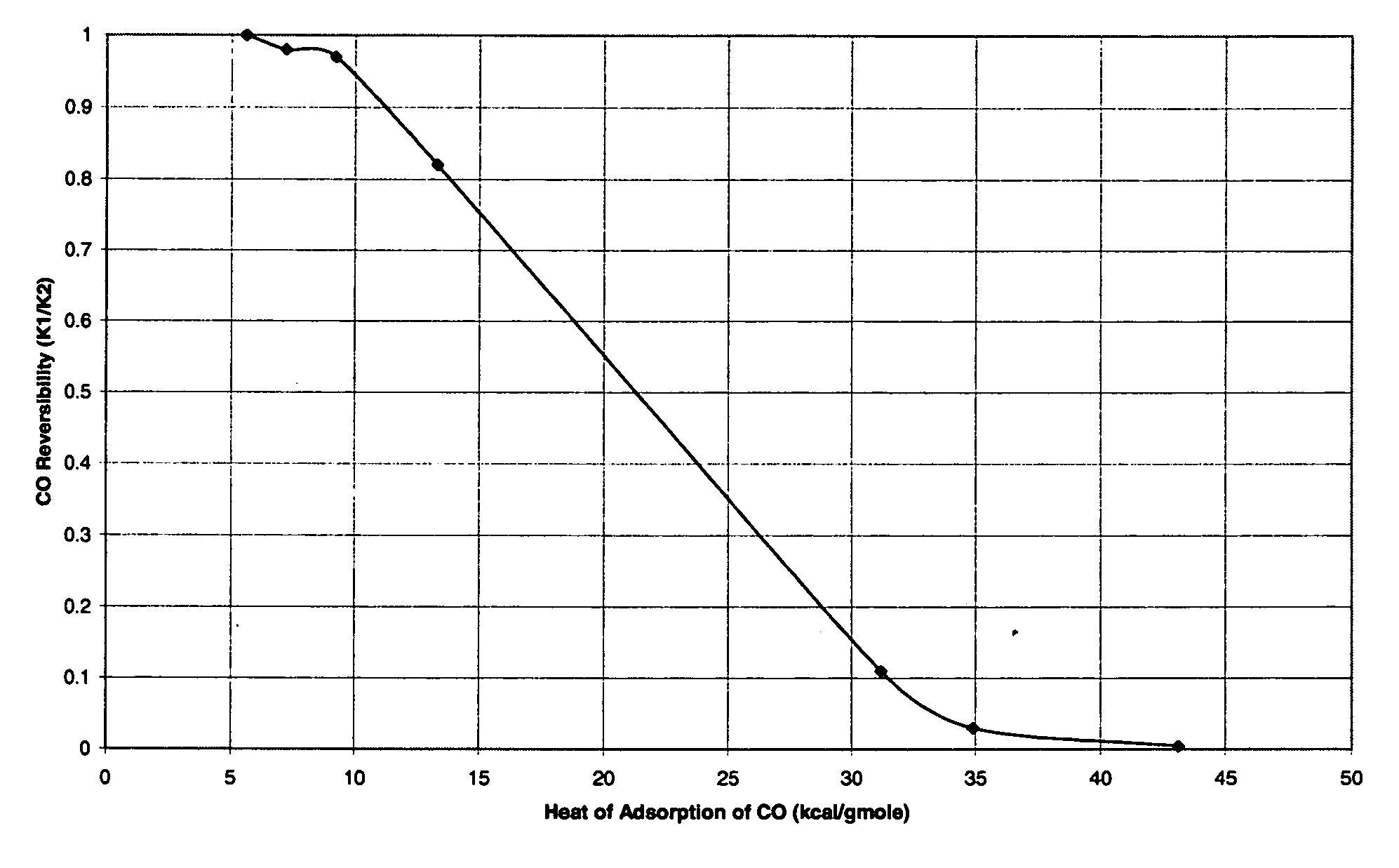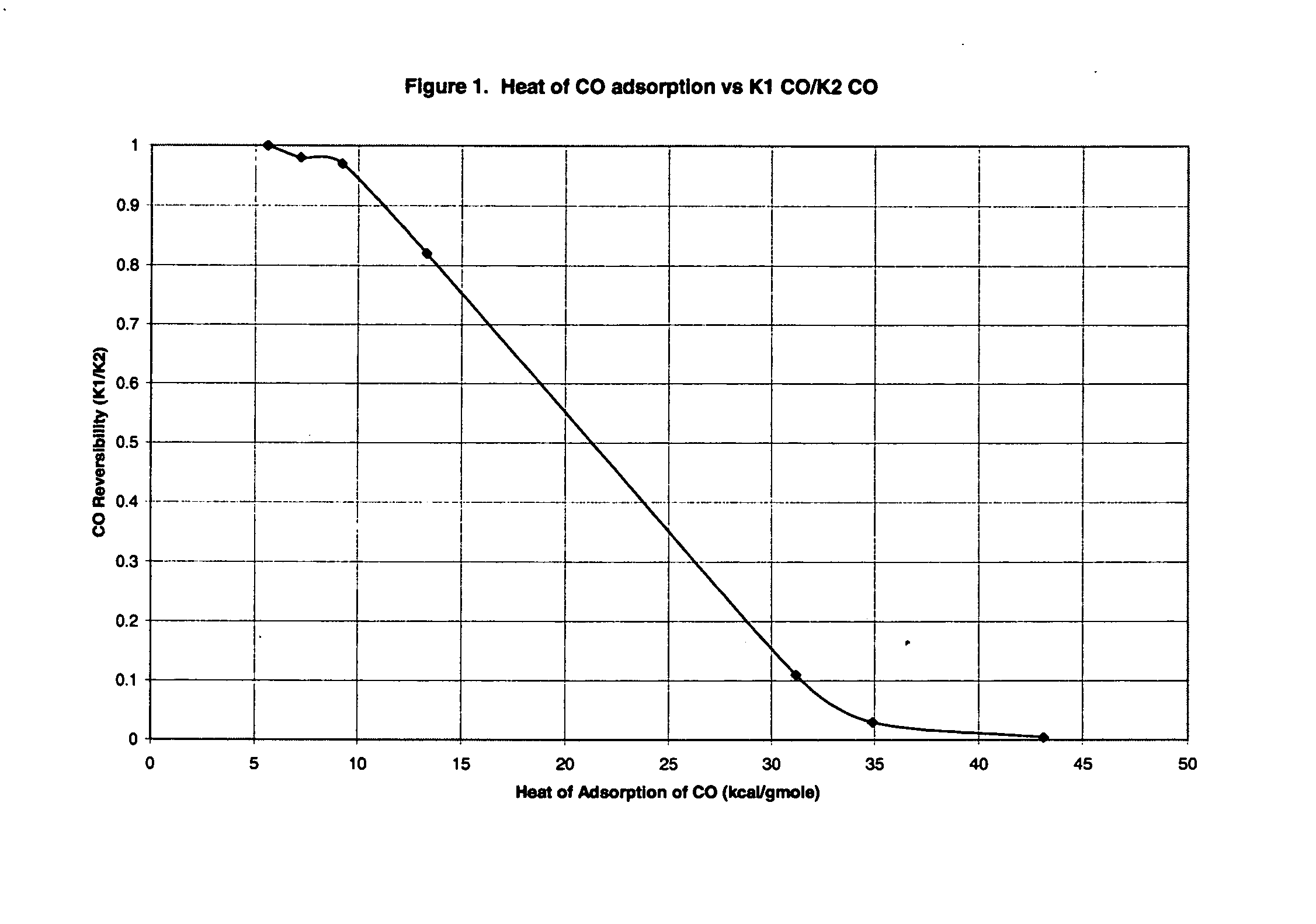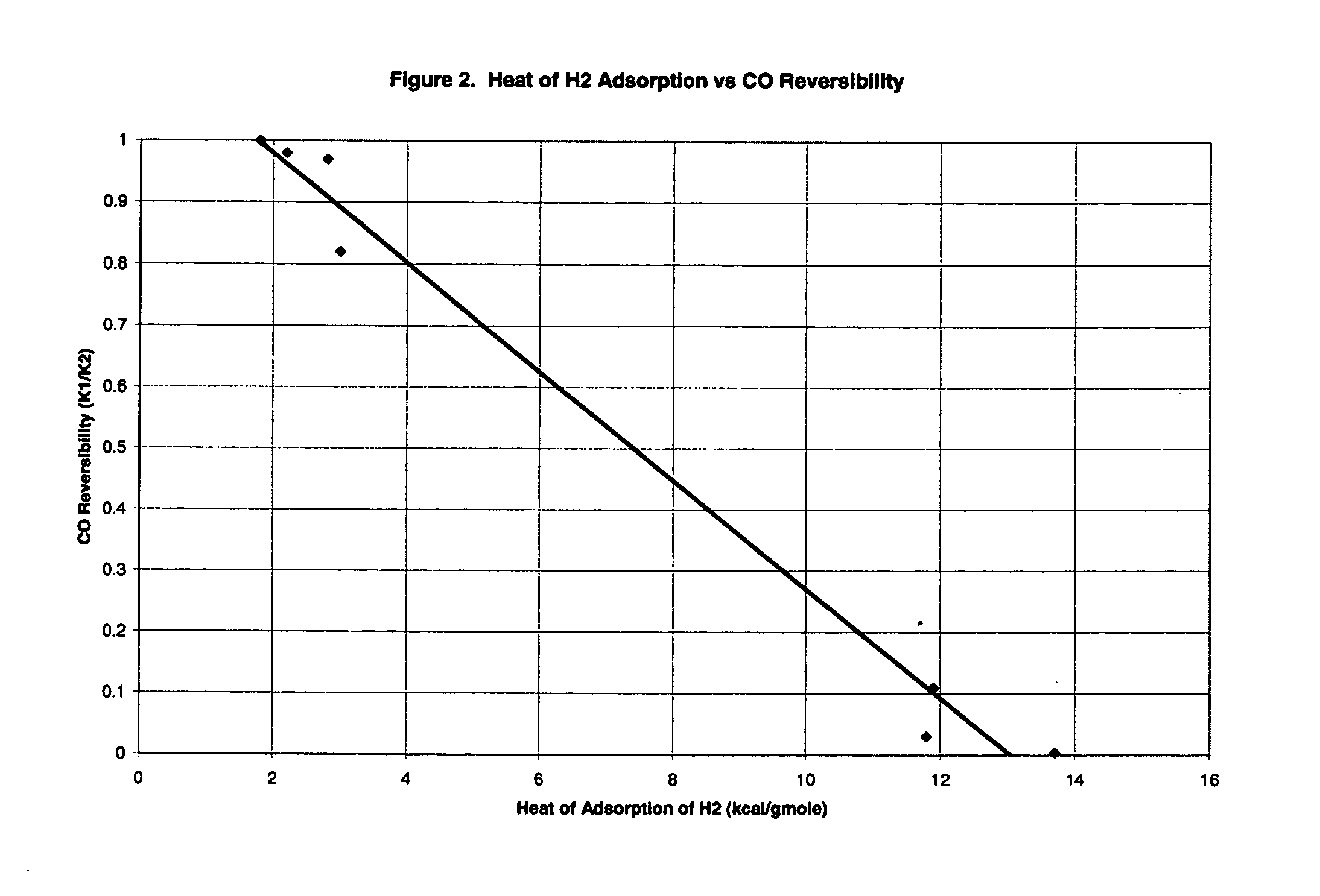Production of carbon monoxide-free hydrogen and helium from a high-purity source
a high-purity source and carbon monoxide-free technology, applied in the direction of hydrogen separation using solid contact, separation process, products, etc., can solve the problems of psa process, psa process, and psa process that does not disclose the use of vacuum recovery of adsorbent, and achieves high hydrogen recovery
- Summary
- Abstract
- Description
- Claims
- Application Information
AI Technical Summary
Benefits of technology
Problems solved by technology
Method used
Image
Examples
example 1
Conclusions
[0071] Based on the experiments of this example, it was concluded that: (1) materials that chemisorb H2 and CO are not suitable for use as adsorbents in processes of the invention; and (2) low heats of CO adsorption are required for rapid adsorbent reactivation by simple evacuation in accordance with the invention.
Adsorption of CO and H2
[0072] The adsorption of CO and H2 was measured on a variety of adsorbents in a standard volumetric adsorption unit. Isotherms were measured at both 30° C. and 70° C. so that heats of adsorption could be determined by the Clausius-Clayperon equation. Henry's law constants (initial isotherm slopes, K H) were also determined in this way. Henry's law constants were determined at an equilibrium pressure of 0.001 atm or lower. All adsorption heats reported were determined at a gas loading of 0.1 mmole / g.
[0073] Initially, the adsorbents were activated in flowing N2 at 150° C. Between each isotherm, the adsorbent was reactivated unless otherw...
example 2
N2 Capacity and N2 / H2 Selectivity
[0080] In the experiments of this example, the adsorbents used in the experiments of Example 1 were tested for N2 adsorption.
[0081] In some instances, it may be desired to produce H2 that is free of any impurities. If the synthesis gas used to produce the H2 is formed by the steam reforming of methane, then the weakest adsorbing component in the feed mixture to the PSA purification equipment is N2. Therefore, a N2 removal material is required. Trace N2 removal is typically accomplished by use of reactive media. For example, it is well known that titanium can react at elevated temperatures with N2 to form titanium nitride. Other metals can also react with N2 including Li, Mg and Zr.
[0082] Physical adsorbents were used for trace N2 removal. Even though the capacity of physical adsorbents is much less than chemical adsorbents, the reversible nature of the process (adsorbents are regenerable), the ability to regenerate quickly, and lack of side chemic...
example 3
AgLiX CO Capacity
[0085] CO breakthrough curves were measured on AgLiX at 25° C. and 150 psig. The feed gas contained 500 ppm CO in He, the total adsorbent weight was 33 grams and the flow rate was 1.8 standard liters per minute. Prior to breakthrough measurements, the material was regenerated in He at 150° C. and repressurized with He to 150 psig. From integration of the breakthrough curves, the CO capacity of the material was determined to be 0.53 mmole / g (1.5 wt %). That is a significant capacity given the low inlet pressure of CO in the experiment.
PUM
| Property | Measurement | Unit |
|---|---|---|
| pressure | aaaaa | aaaaa |
| particle size | aaaaa | aaaaa |
| temperature | aaaaa | aaaaa |
Abstract
Description
Claims
Application Information
 Login to View More
Login to View More - R&D
- Intellectual Property
- Life Sciences
- Materials
- Tech Scout
- Unparalleled Data Quality
- Higher Quality Content
- 60% Fewer Hallucinations
Browse by: Latest US Patents, China's latest patents, Technical Efficacy Thesaurus, Application Domain, Technology Topic, Popular Technical Reports.
© 2025 PatSnap. All rights reserved.Legal|Privacy policy|Modern Slavery Act Transparency Statement|Sitemap|About US| Contact US: help@patsnap.com



